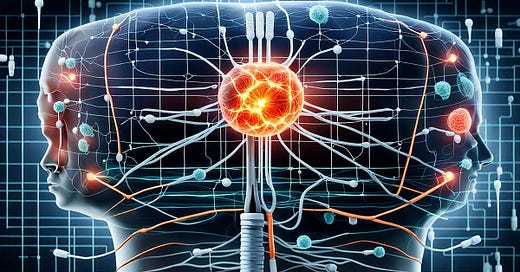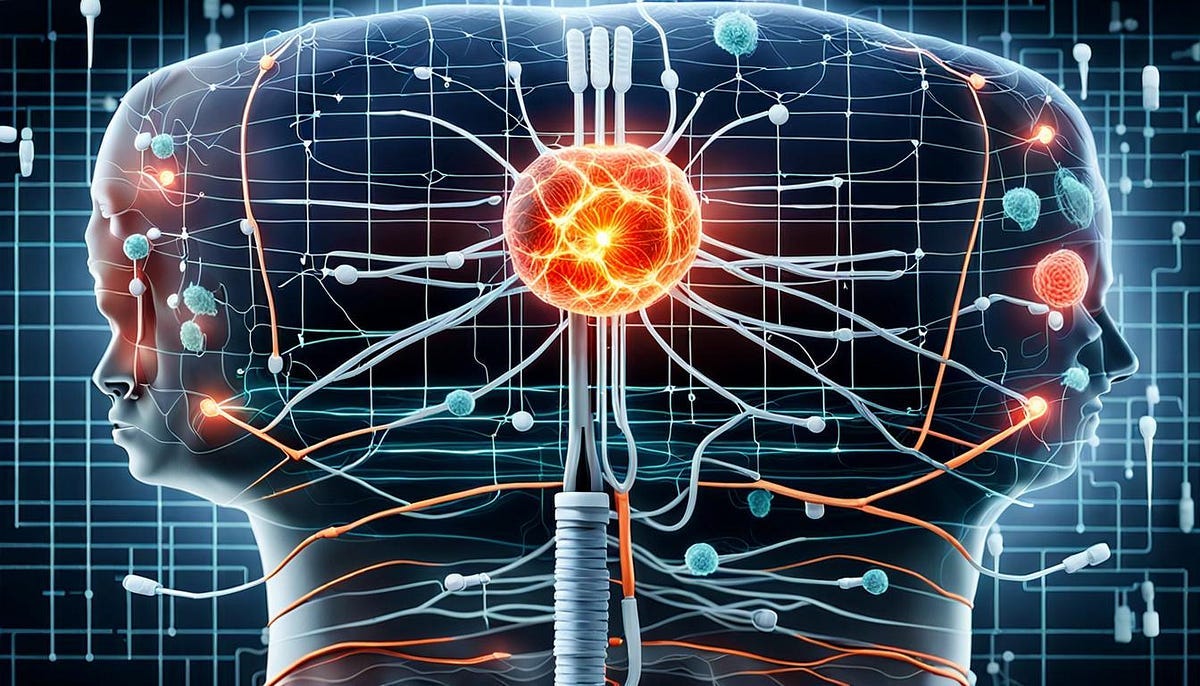Electronic implants and other goodies
I am interested in the use implants in medicine and the modern emphasis of using the human body’s own electrical and neuronal inbuilt systems to work symbiotically with these seemingly alien intrusions.
Bioelectronic medicine is a new and exciting field that combines electronics with the body’s natural systems to diagnose and treat diseases, so that by using the body’s own electrical signals, the approach aims to improve patient care and reduce healthcare costs.
Neuromodulation Techniques
Neuromodulation techniques in bioelectronic medicine use electrical pulses to change nerve activity, with techniques that target both the central nervous system (like the brain and spinal cord) and the peripheral nervous system (nerves outside the brain and spinal cord).
Some common methods include:
Spinal Cord Stimulation: Used to treat chronic pain by blocking pain signals.
Deep Brain Stimulation: Used to treat conditions like epilepsy and depression by activating specific brain areas.
Vagus Nerve Stimulation: Used to treat conditions like epilepsy and depression by stimulating the vagus nerve.
These methods involve placing small electrodes on specific nerves and using devices to send electrical pulses, and this can block pain signals or activate nerves that aren’t working properly, offering a less invasive alternative to traditional treatments.
Diagnostic and Therapeutic Devices
Bioelectronic medicine is changing patient care with devices that can sense and respond in real-time. Examples include:
Pacemakers: These devices help regulate heart rhythms.
Cochlear Implants: These convert sound into electrical signals that the brain can understand, helping people with hearing loss.
I think what impresses me is that hese devices are customized to meet individual needs and can adapt to changes in the patient’s condition. They can also be powered wirelessly and connected to hospital systems, making them more functional and integrated into modern healthcare.
Their precision and adaptability make them a promising alternative to traditional drugs, and this potentially can reduce side effects and improve patient outcomes.
Chronic Disease Management
The newest techniques offer new ways to manage chronic diseases by targeting specific nerve circuits to control bodily functions.
Vagus Nerve Stimulation: Can help control inflammation, which is important in conditions like rheumatoid arthritis and metabolic syndromes.
Diabetes and Hypertension: Bioelectronic devices are being explored to help manage these conditions by addressing their underlying causes.
Future Prospects in Bioelectronic Medicine
Ongoing research in bioelectronic medicine is focused on enhancing the specificity and efficacy of neuromodulation techniques, developing wireless and minimally invasive devices, and integrating artificial intelligence to optimize treatment protocols.
For the future, they aim to expand applications, such as using targeted ultrasound stimulation and solid-state batteries for device miniaturization.
It’s believed that this field is poised to revolutionize healthcare by offering more precise, less invasive treatment options, potentially reducing healthcare costs and improving patient outcomes.
If so, we may see some amazing changes to the way we get diagnosed and treated in the near future
I’m off now to plug myself into the mains socket.
References:
DOI:
Introduction
Bioelectronics, as the most general definition, is the field that interfaces electronics with biology. For example, a…doi.org
What is Bioelectronic Medicine? | Blog | Kingstec
Subscribe to get my free weekly Newsletter, Healthwise, on Substack. All things Health, Wellness and Science
Click here: Healthwise: Exploring the Frontiers of Wellness and Science | Tom Kane | Substack





